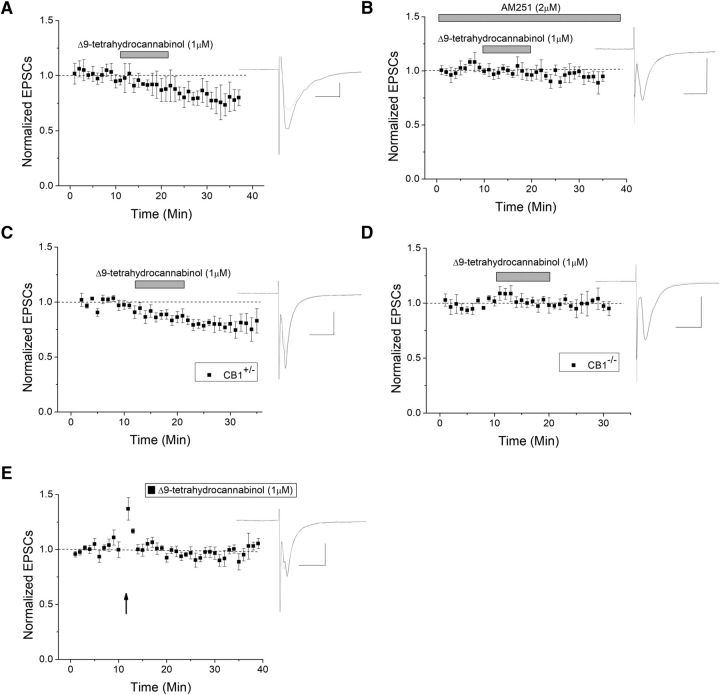Figure 6.
THC induces CB1-dependent depression. A, THC is the psychoactive component in marijuana, and a known CB1 agonist. When THC is applied to the extracellular bath, it produced a lasting depression (n = 6, p < 0.05). B, The CB1 antagonist AM-251 significantly blocked THC-induced depression (n = 6, p < 0.05, compared with THC without AM251). C, CB1 knock-out and heterozygous mice were also used to confirm CB1 involvement, where THC induced depression in heterozygous mice (n = 7, p < 0.05 compared with baseline). D, In CB1 KO mice, THC failed to produce significant depression (n = 9, p < 0.05; compared with THC in heterozygote mice). E, THC occluded HFS-LTD, suggesting that THC and HFS-LTD use the same pathway (p < 0.05 compared with control LTD).

